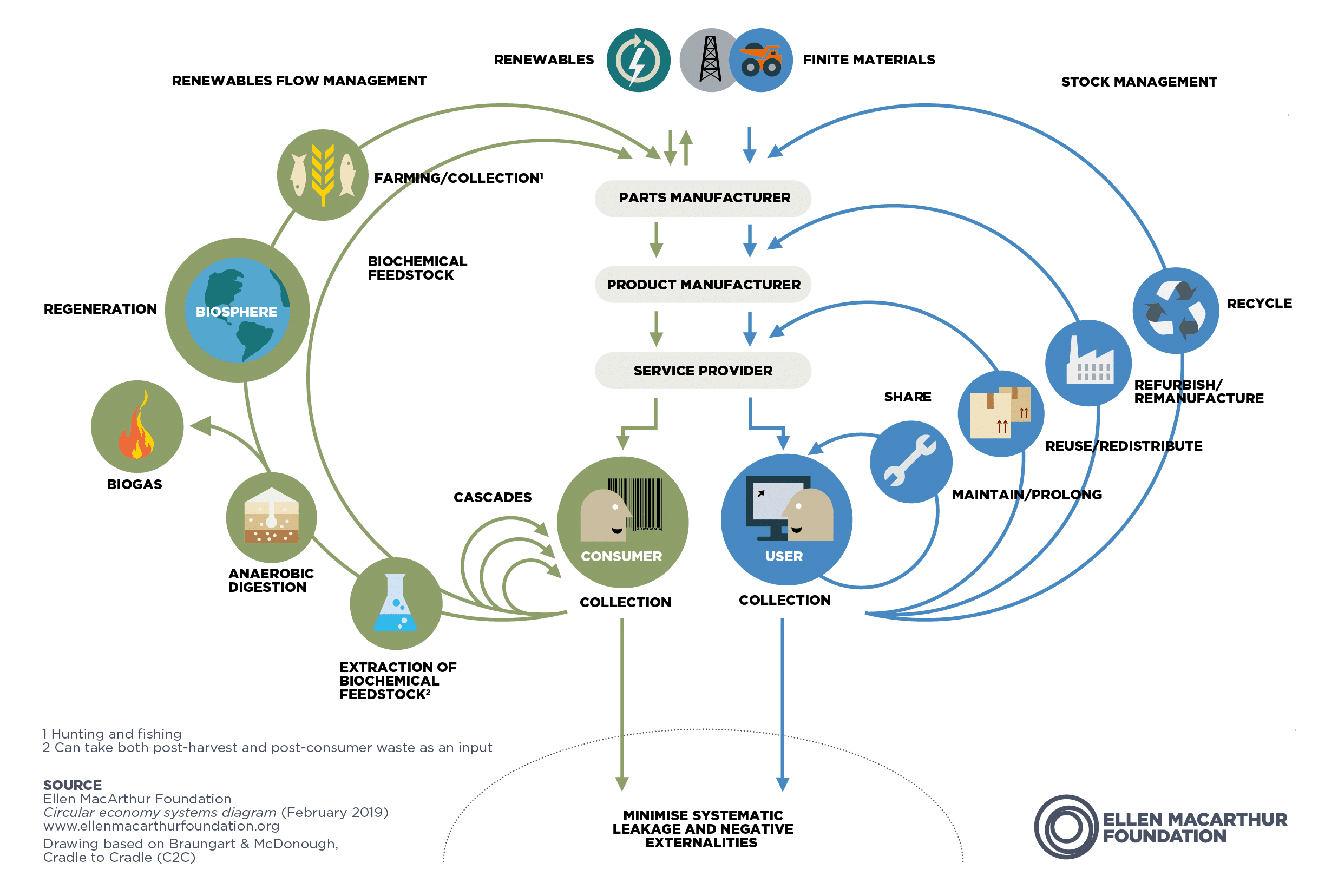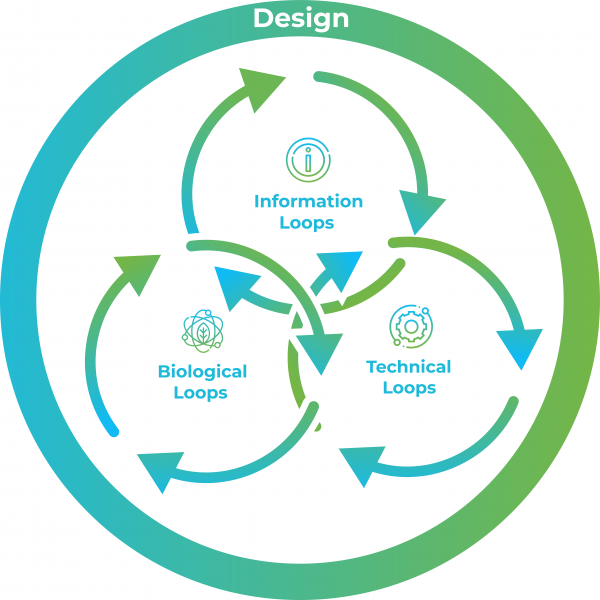Key loops within a Circular Economy
The Circular economy represents a way of thinking about the world. It starts with rethinking the way we design products, services, processes and systems. This design is borrowed from nature where nothing is wasted. In a circular economy products, services, processes and systems are designed to run in closed loops that eliminate waste.
The circular economy has been divided into three distinct kinds of cycles or loops. These are biological loops, technical loops and information loops.
Biological loops
Biological loops contain materials such as food and wood which are managed to leverage the sophisticated circularity inherent in natural systems. This maximised renewable resources while driving regeneration and increased resilience of environmental systems. It includes aspects such as soil health and biodiversity. These systems are vital as they provide services such as cabin capture, pollination, protection from erosion, and clean water.
Technical loops
Technical loops represent non-organic materials. A circular economy approach to this circle is concerned with design of the materials, components, products and services to keep them in the loop in as high quality form for as long as possible.
This diagram provides a detailed overview of these two circles:

Information loops
The final loops within the circular economy is the information cycle. Data and the ability to interoperate it offer tremendous opportunities for businesses and governments to
- Increase reduce waste and increase effectiveness within existing business and industries
- Identify new solutions to existing problems/opportunities
- Identify future trends and business opportunities
These three cycles are not separate but interconnected. Success in the new circular economy is about building connections and collaboration between business, customers, communities and government.

Globally we are now in the moment of understanding that we cannot have a healthy thriving society and environment without a high-performance circular economy. The circular economy is not what a handful of early adopters are looking at, it is here to stay. It is driving global economic reforms and establishing firm policy settings for modern developed economies.


